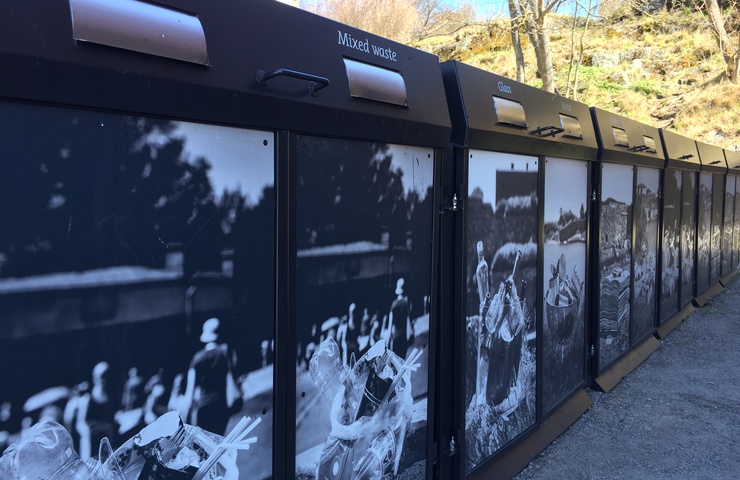The 7 Most Important Topics for the Digital Future in Disposal Logistics (Part 2)

“Competitive edge through efficient routing.” Among others, the following topics were subject to heated discussion at the VOEB (association of Austrian disposal companies) conference in Lower Austrian Guntramsdorf on 22.03.2017. Our colleague Alexander Ries-Schweitzer was on the ground and participated in the discussions.
6. Routing and Route Optimisation
In addition to container management, routing and route optimisation were the most important topics of discussion. There are two approaches or tools which were presented:
Fleetroute
Fleetroute is a comprehensive tool for the complex calculation of tours considering vast quantities of parameters (e.g. metres in altitude, mainly right turns, variable vehicle capacities, thousands of operating sites and times, etc.). This tool may not be cheap, but it is highly efficient. You can either order it as a project once a year or buy the software and calculate the tours yourself every couple of months/weeks/days.
XCargo
Is an Excel add-in to create transport cost calculations, routing and site optimisations of little to medium complexity quickly and efficiently. Although the tool has its limitations (e.g. it is hard to virtually impossible to map container exchanges), it has the advantage of being much more affordable than Fleetroute and it works in Excel.
7. Rigid Routing vs. Dynamic Routing
The conference participants also discussed the topic of route optimisation thoroughly. The discussions also included the pros and cons as well as the differences between rigid routing (as currently common in the waste management industry) and dynamic routing.
Rigid routing means in this context that every container is picked up at a set time, regardless of whether the container is full or not.
Dynamic routing means that containers are only collected after they have reached a specified filling level. As mentioned in the example above, containers could automatically notify the system and be collected at filling levels of 70 % and more.
Of course, there need to be detailed analyses which type of routing makes sense for which type of collection and equipment of the waste disposal service provider. This holds true in particular when considering journey times, since the longer the journey time, the more sense does rigid routing make. For instance, dynamic route optimisation in the case of a remote valley could lead to container A being ready for collection on Monday and container B being ready for collection on Tuesday. If both containers fit on one truck, the waste disposal service provider would have had twice the journey and would not have saved any costs. However, if only one container fits on one truck, dynamic routing definitely has advantages, since only full containers are transported.
Read the first part of the article here.
Conclusion on the Conference from COSMO CONSULT´s Point of View:
The conference was very successful and really interesting. We had already discussed many of the topics, and the better insight regarding the opinions of companies from this industry we have gained allows us to understand our customers and interested parties even better. We will continue attending events like this and keep at it.
cc|environmental services
Find out more about our industry solution for the waste management and recycling industry.
About the Author: Alexander Ries-Schweitzer

Alexander Ries-Schweitzer is a Senior Application Consultant with focus on logistics at COSMO CONSULT (formerly FWI). His basic profession was forwarding agent and he has been working in various functions in the logistics and supply chain management area, for more than 25 years, but always with reference to IT in the context of project and process management. Alexander Ries-Schweitzer is a graduate of IMC Krems (BA – Management and E-Business Management).